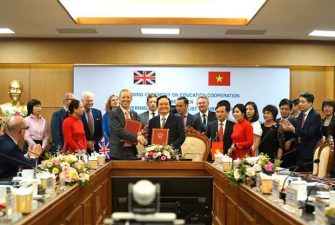
|
After days of discussion at the first virtual ministerial meeting in 2021, the Organisation of Petroleum Exporting Countries and partners (also known as OPEC+) have agreed to slightly increase their oil production in February and March; however, this applies to only Russia and Kazakhstan. |
|
Meanwhile, Saudi Arabia voluntarily pledged an additional cut of one million barrels a day compared to the previous agreement. OPEC+ members continue to show their role of cautiously leading the oil market amidst the complicated developments of the COVID-19 pandemic. The OPEC+ ministerial meeting took place in the context of member countries’ efforts to support the oil market which has been hit by the pandemic. Oil consumption in 2020 fell sharply as a result of the disease. The goal of OPEC+ is to attain a balance, even a fragile one, between pushing the oil prices up to a high enough level to help consolidate member states’ budget, but not too much to cause production of their opponents, such as the US, to hike. After the most recent conference held in November 2020, OPEC+ countries reached consensus on increasing oil production by 500,000 barrels per day from January 2021. At the same event, 13 members of OPEC+ also agreed to meet once a month at the beginning of the month to discuss any changes in terms of oil production for the following month. However, at the first meeting in 2021, there remained deep disagreements between countries, making it difficult to reach a deal. Some members believed that the second wave of COVID-19 will continue to rage, so it is too early to add nearly two million barrels per day to the market. Meanwhile, an increase of 25% in crude oil prices as well as the positive outlook of COVID-19 vaccine development have led some countries to see the “light at the end of the tunnel” and call for the maintenance of the set production increase schedule. In reality, the output cuts and the declined oil revenues have put several countries in difficulties, although these reductions have partly worked to push up oil prices. Under the newly reached agreement, Russia and Kazakhstan will be allowed to increase production by a total of 75,000 barrels per day in February and March. OPEC+ will lower its total crude oil production cuts to 7.125 million barrels per day in February and 7.05 million barrels per day for March compared to the figure of 7.2 million barrels per day set out in previous agreements, or 7% of global demand. Earlier, an internal OPEC document proposed a cut of 500,000 barrels per day next month within some scenarios considered for 2021. According to this document, OPEC+ emphasised the risks of falling oil prices and stated that the reimposition of lockdown measures across continents to prevent the spread of COVID-19 is hindering the recovery of oil demand in 2021. However, among OPEC+ members, there are calculations to both ensure their own interests and not to deviate from the bloc’s goal of supporting oil prices that are precarious due to the impact of the pandemic. Russia and Kazakhstan had initially insisted on raising production by 0.5 million barrels per day, while Iraq, Nigeria and the United Arab Emirates suggested that output be held steady. To reach an agreement during this meeting, countries had to compromise on the long-term policy for the rest of the year. In the face of a fragile market, Saudi Arabia called for OPEC+ members to be flexible in meeting oil demand as the country is developing a plan towards apply the policy of tightening oil output in 2021 to cope with declining demand. Saudi Arabia’s energy minister said that the market will not be generous to those who do not comply with agreements and OPEC+ must be ready to adjust the terms of the agreement, if necessary, to prevent any negative reactions from the market. Therefore, reaching a consensus on output adjustment is not easy for OPEC+ member countries, but it is a shared responsibility in maintaining the bloc’s market leading role. OPEC+ has lowered its oil demand forecast for 2021, thereby showing support for the policy of tightening supplies. The complicated developments of the pandemic have caused the recovery of global oil demand to be uneven and possibly slower, thus posing greater difficulties to the producers’ efforts in balancing the market and stabilising the oil prices. Source: Nhan Dan Online |

